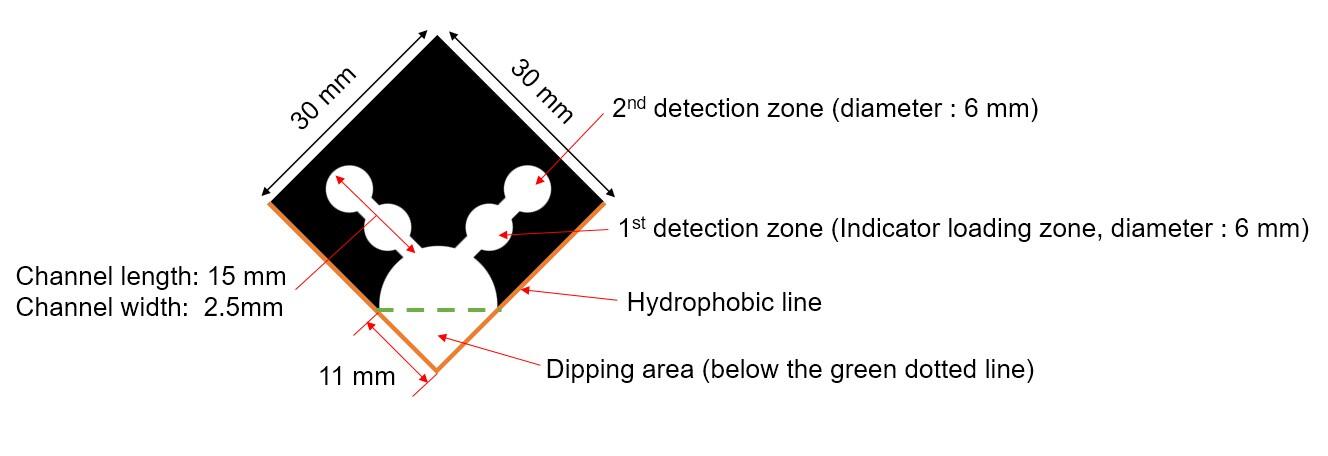A research group comprised of Takeshi Komatsu, a graduate student at the Graduate School of Chemical Sciences and Engineering, Hokkaido University and Assistant Professor Akihiko Ishida and Professor Manabu Tokeshi of the Graduate School of Engineering, Hokkaido University, have successfully developed a paper analytical device that can measure the concentration of components in a substance simply by submerging it in a sample solution.

(Credit: This figure is a modified version of Figure 1 published in ACS Sensors
(ACS Sens., 6, 1094 (2021).))
Testing devices made with cheap filter paper are currently under development throughout the world. These devices are expected to help build testing systems that anyone can use anywhere because, when combined with smartphones, they enable the measurement of component density rather than only the presence of a substance via a positive/negative test result. To date, however, it was necessary to carefully and accurately collect a trace sample using expensive pipettes to carry out such tests.
The small scale and thin testing device developed by the team uses a three cm square piece of filter paper printed with water repelling ink. This property allows the ink to form channels on specific parts of the filter paper. An immersion zone is placed at one end of the channel, and when this is submerged in a liquid solution, the liquid flows along the channel towards that zone through capillary action. A section in the middle of the channel is dyed with a special reagent that reacts with the liquid as it spreads along the channel, causing the paper to change colors according to the density of the substance being measured.
The team used the device to measure the vitamin C content and pH of drinking water by submerging it during different length of time, and found that the density measurement for vitamin C remained stable over time at all densities (0 to 10 mg/l), using image analysis to measure the value based on the reaction color. Meanwhile, the reaction color when measuring pH (for value between 2 and 8) also remained stable as long as the device was submerged for 3 or more seconds.
According to Tokeshi, "Research on this type of device is being done all over the world, but we were able to develop one capable of measuring component concentration simply by submerging it in the solution without the use of a pipette. In addition to carrying out various tests in the field, we also hope to see it used as a tool for science education, such as online experiments."
This article has been translated by JST with permission from The Science News Ltd.(https://sci-news.co.jp/). Unauthorized reproduction of the article and photographs is prohibited.




